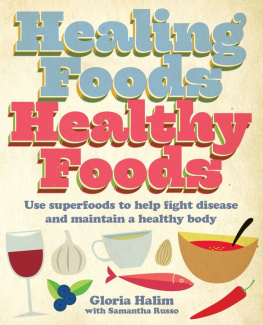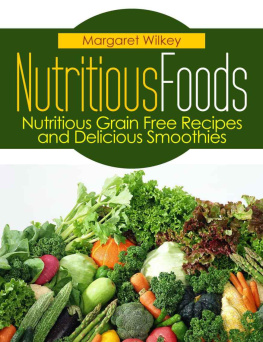The

WHOLE FOODS
COOKBOOK
Dear Reader,
Thank you so much for picking up The Everything Whole Foods Cookbook. In this book I have striven to include a variety of recipes that not only utilize whole foods, but that taste great and are easy to prepare. Cooking with whole foods does not have to be daunting. It just means taking a step back from the freezer section, putting some boxed meals back on the shelf, and starting to cook with wholesome, fresh ingredients.
I am excited to share these recipes with you. I have always loved food and cooking from scratch. Cooking with fresh, local ingredients and whole foods is a passion of mine. There is nothing like eating the perfect tomato on a hot August day or making a dazzling dish with fresh-caught crab. Eating whole foods is not only good for you, it is also delicious. Please use this book as your guide to a new, exciting, tasty way to eat.

Welcome to the

Series!
These handy, accessible books give you all you need to tackle a difficult project, gain a new hobby, comprehend a fascinating topic, prepare for an exam, or even brush up on something you learned back in school but have since forgotten.
You can choose to read an Everything book from cover to cover or just pick out the information you want from our four useful boxes: e-questions, e-facts, e-alerts, and e-ssentials. We give you everything you need to know on the subject, but throw in a lot of fun stuff along the way, too.
We now have more than 400 Everything books in print, spanning such wide-ranging categories as weddings, pregnancy, cooking, music instruction, foreign language, crafts, pets, New Age, and so much more. When youre done reading them all, you can finally say you know Everything!

Answers to common questions

Important snippets of information

Urgent warnings

Quick handy tips
PUBLISHER Karen Cooper
DIRECTOR OF ACQUISITIONS AND INNOVATION Paula Munier
MANAGING EDITOR, EVERYTHING SERIES Lisa Laing
COPY CHIEF Casey Ebert
ASSISTANT PRODUCTION EDITOR Melanie Cordova
ACQUISITIONS EDITOR Lisa Laing
SENIOR DEVELOPMENT EDITOR Brett Palana-Shanahan
EDITORIAL ASSISTANT Matthew Kane
EVERYTHING SERIES COVER DESIGNER Erin Alexander
LAYOUT DESIGNERS Erin Dawson, Michelle Roy Kelly, Elisabeth Lariviere, Denise Wallace
Visit the entire Everything series at www.everything.com
THE

WHOLE FOODS
COOKBOOK
Rachel Rappaport

To my husband, Matt, who loves food as much as I do.
Acknowledgments
I would like to thank my friends and family for happily and enthusiastically taste testing many of the recipes contained within.
Introduction
EVER SINCE 1813 WHEN the first commercial canning factory opened in England, there has been tremendous interest in preserving food, not just at home but in mass, commercially viable ways. In 1923 Clarence Birdseye developed a method of flash freezing, which by 1930 meant that people could buy frozen seafood, fruit, meat, and vegetables at their local store. That was just the beginning.
In the years since, the processed food market has evolved from the simple preservation of whole ingredients to the era of convenience foods. By 1953 the TV dinner was on the market and the race to produce even more prefabricated meals, side dishes, and desserts had begun. Combined with a national obsession with modernity, people were excited by these inventions, which sought to free them from the long, laborious ways their parents and grandparents had to prepare meals. Anything that saved so much time must be good, right? Unfortunately, that is not the case.
Most frozen, canned, packaged, and otherwise processed foods are loaded with sweeteners, dyes, preservatives, and chemicals. These additives are to keep the product fresh, shelf-stable and attractive for as long as possible. Consumers have had negative reactions to these additives to varying degrees; for example, sensitivities or allergies to certain dyes.
Processing of food can have some negative effects on its nutritional value. Valuable vitamins and minerals can be lost entirely or diminished during processing. The food processing procedure itself also has drawbacks. Due to the large quantities of food being processed, there is a risk of contamination from bacteria or foreign objects.
Luckily, there is an alternative to processed food. Whole foods are foods that are minimally processed and that are in the purest, most natural form possible. Whole foods are preservative, dye, sweetener, and chemical free. Picture a pineapple fresh from the tree, not diced and stuffed into a can with maraschino cherries and heavy syrup. That is the sort of freshness and flavor whole foods provide.
Eating a diet full of whole foods like whole grains, fresh fruits and vegetables, unprocessed meats and seafood, and legumes helps promote a healthy immune system, leaving one less likely to fall victim to disease or chronic illness. Fiber-rich whole grains and legumes help maintain a high-functioning digestive track. Fresh, wholesome seafood is rich in heart-healthy omega-3 fatty acids and minerals. Fresh fruits and vegetables are not only delicious; they are also low in calories, high in vitamins and fiber. Combined with herbs, spices and a few sauces and vinegars, these foods become stars on the dinner table.

















 Series!
Series!



